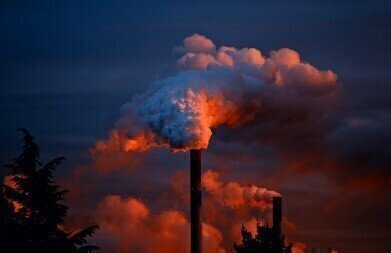News & Views
What are Persistent Organic Pollutants (POPs)?
Sep 25 2014
Persistent Organic Pollutants (POPs) are toxic chemicals that persist in the environment and pose a risk to the environment and human health. POPs occur all over the world, not just in the countries where they are produced and used. Prevailing wind and ocean currents can easily transport them.
POPs
POPs come from a diverse group of chemicals and uses. Two examples of POPs produced to help mankind are PCBs and DDT. Polychlorinated biphenyls (PCBs) were widely used in industry in electrical wiring, flame-retardants and paints. PCBs are extremely stable chemicals, due to their resistance to oxidation in the environment. They can last for many years and are difficult to get rid of.
Another widely used POP is dichlorodiphenyltrichloroethane (DDT). DDT was used as a pesticide as it was effective and cheap to make. It is still used to control mosquitoes in some areas of the world.
Another set of POPs is unintentionally produced as by-products of industrial processes. One of the most widely known is the production of dioxins from burning waste material in incinerators. The testing of water for POPs is the subject of this article: Development of a Method to Better Quantify Levels of the Persistent Organic Pollutants Iodinated X-Ray Contrast Media and Artificial Sweeteners Found in Water.
Silent Spring
The use of DDT was the subject of a book “Silent Spring’ by Rachel Carson, which had a tremendous influence in banning the use of DDT and raised environmental awareness amongst the public and governments.
DDT was used on many agricultural crops in the USA, especially cotton, from 1945 to 1972. One of the side effects of using DDT is termed bioaccumulation. As DDT is stable and difficult to break down, it accumulates in the fatty tissues of an organism or animal. This can lead to poisoning of that animal if the DDT is released from the fatty tissue.
Alternatively a predator can eat the animal and the DDT accumulates in the predator. One of the problems in this scenario is that if the predator eats many prey, for example a bird eating worms that are all contaminated with DDT, the bird accumulates a high concentration of the toxin. This can continue up the food web with each predator ingesting more of the DDT, a process known as biomagnification.
This is the sequence that Carson suggested in Silent Spring, when it was noted that there had been a large decline in the songbird population. Biomagnification had a direct effect on some birds causing illness and death, but it also had an effect on the bird’s ability to reproduce, reducing the number of offspring.
Stockholm Convention
One of the main regulations put into place to eradicate and restrict the use of POPs is known as the Stockholm Convention. This was instigated after POPs contamination was discovered in the Arctic. With no POPs produced or used in the Arctic, the only way they could have got there was by air and ocean currents.
Digital Edition
Lab Asia 31.2 April 2024
April 2024
In This Edition Chromatography Articles - Approaches to troubleshooting an SPE method for the analysis of oligonucleotides (pt i) - High-precision liquid flow processes demand full fluidic c...
View all digital editions
Events
May 14 2024 Oklahoma City, OK, USA
May 15 2024 Birmingham, UK
May 21 2024 Lagos, Nigeria
May 22 2024 Basel, Switzerland
Scientific Laboratory Show & Conference 2024
May 22 2024 Nottingham, UK






.jpg)











